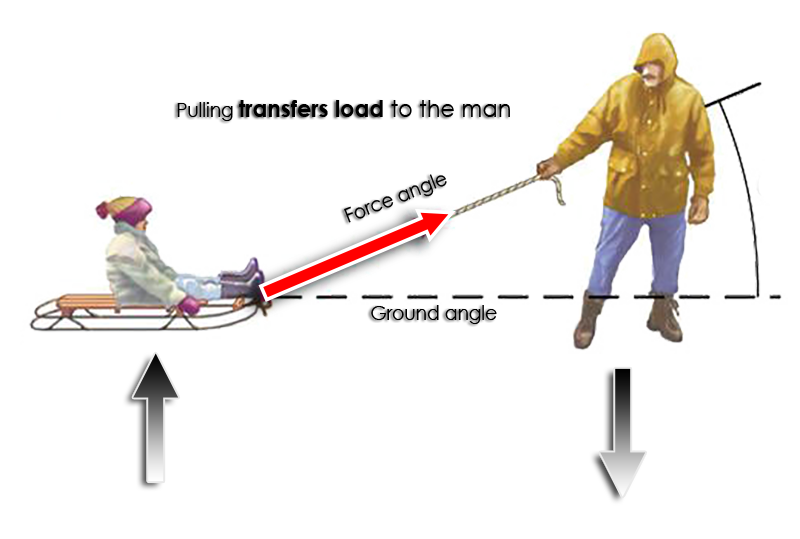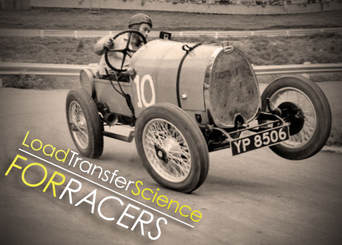
calculating Load Transfer
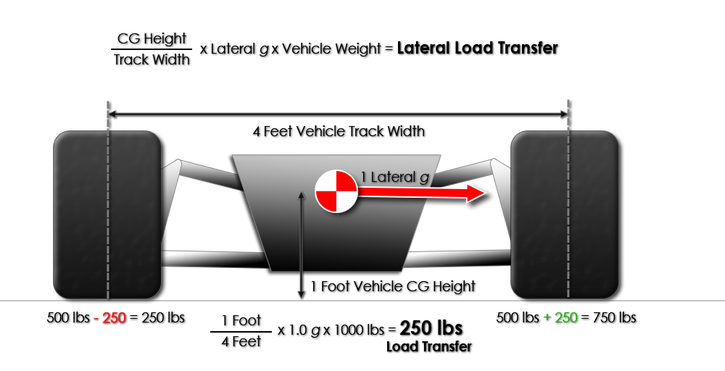
As we learned previously, due to load sensitivity, the less load transfer we have, the greater the amount of potential grip our car has. You can plug in some different numbers to see why racecars are typically built low and wide as this reduces load transfer. In fact, the CG height and width of a car are the only variables that affect the percentage of total load transfer for a given lateral g. Once a car is built, you typically can only make small changes to total load transfer by changing ride height. Other suspension settings such as springs and anti-roll bars can be used to change how the load transfer differs front to rear (altering balance,) but the total amount of load transfer and therefore maximum potential grip remains the same.
The angle Determines the Load transfer
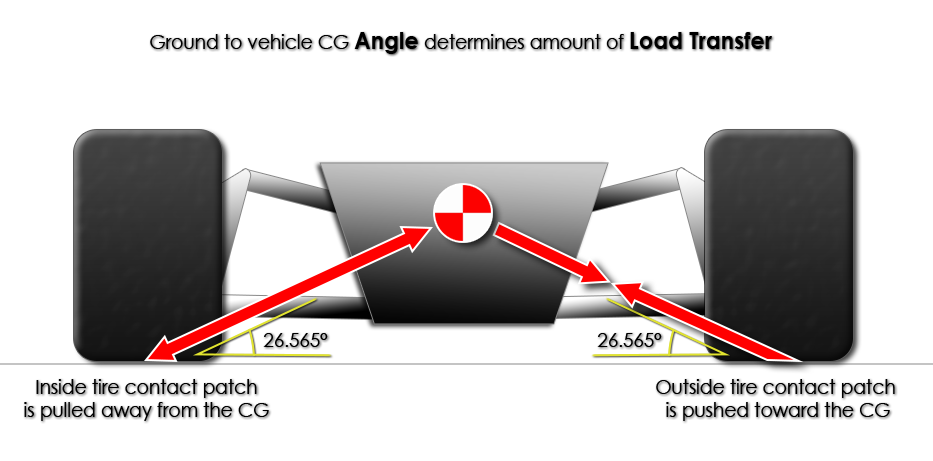
There is one force trying to push the outside tire directly toward the CG as well as one trying to pull the inside tire directly away from the CG. The amount of load transfer is directly related to the angle of those arrows. In the example we are using, the angle is 26.565 degrees. The smaller the angle between the CG and the ground, the lower the amount of load transfer. To understand why, you just need a friend and a sled.
Pushing a sled transfers load
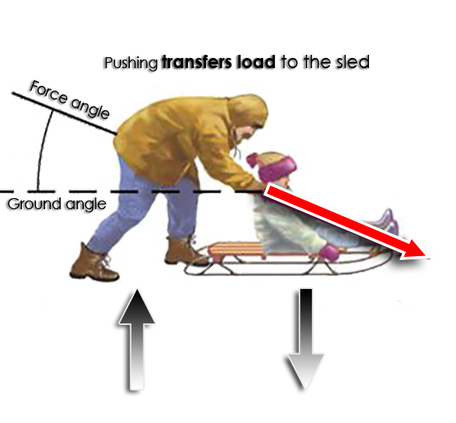
This causes the friend and sled to effectively weigh more which increases friction and makes it harder to push. Since everything still weighs the same total amount however, this also causes you to effectively weigh less. There is load transfer. This load transfer is unavoidable because the force you are applying is up above the ground and the frictional force from the sled is at ground level.
This works in exactly the same way as the center of gravity of a vehicle being resisted by the tire friction during cornering. The sled acts like the outside tire and your shoes are the inside tire. The point you push on your friend is like the location of the CG as it determines the angle of force. If you wanted to reduce the load transfer to make it easier to push you could do so by ducking down and pushing on the sled instead of the person as this would reduce the ANGLE between the force you are applying and the resisting frictional force at ground level.
There is another solution however. Instead of pushing, you could pull the sled. Pulling a sled causes load to transfer away from the sled and on to you. This reduces the friction experienced by the sled and increases friction in your shoes so they have more grip on slippy surfaces. If you started to slip, you could pull the rope at higher angles to improve your shoes' grip by increasing the load on them.
Force angles & Suspension
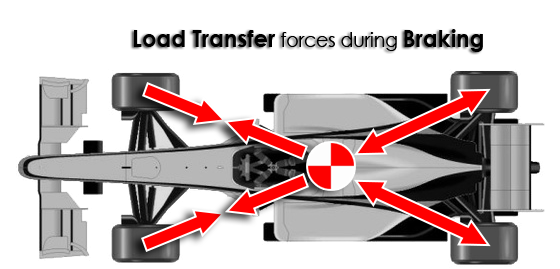
If a vehicle had rigidly mounted tires, most of this would be academic, but since tires are typically mounted on suspension and they each move through an arc as the suspension moves, understanding these force angles can be quite important to take into account. In an upcoming article we'll learn about roll centers and how these force angles interact with the suspension to create jacking forces and alter vehicle balance.
I hope you enjoyed this article. If you are interested in a complete guide to the physics of racing, we also offer The Science of Speed book series, available through our bookstore or at popular retailers such as Amazon.

